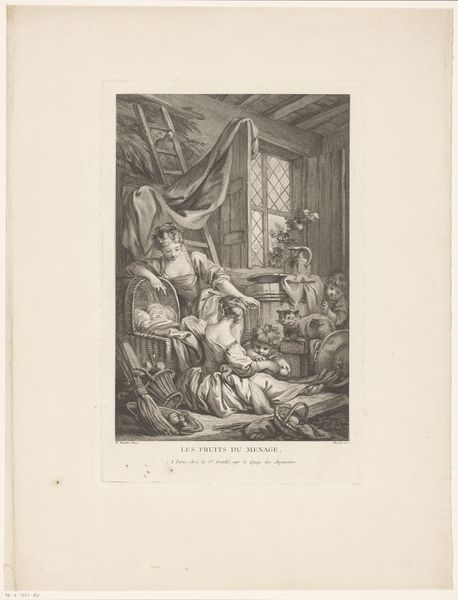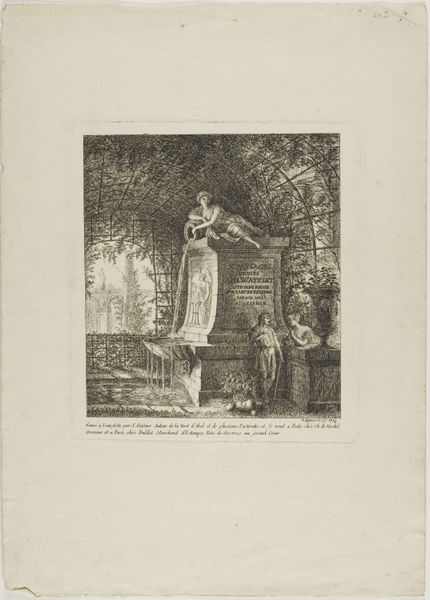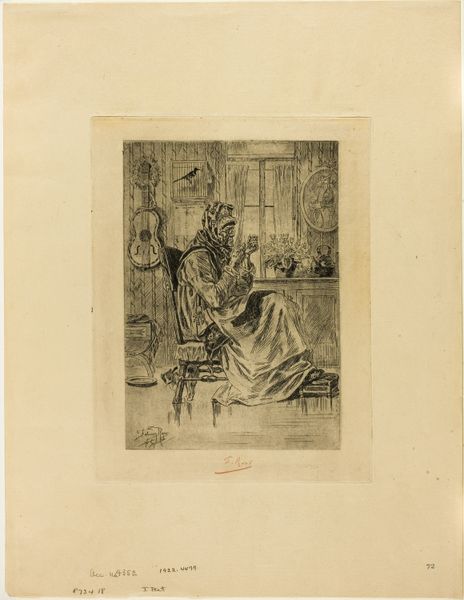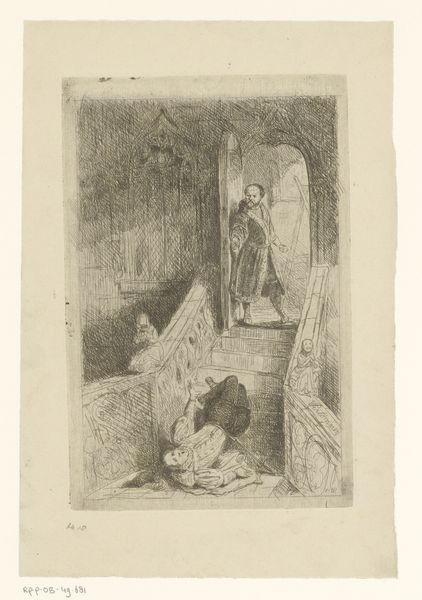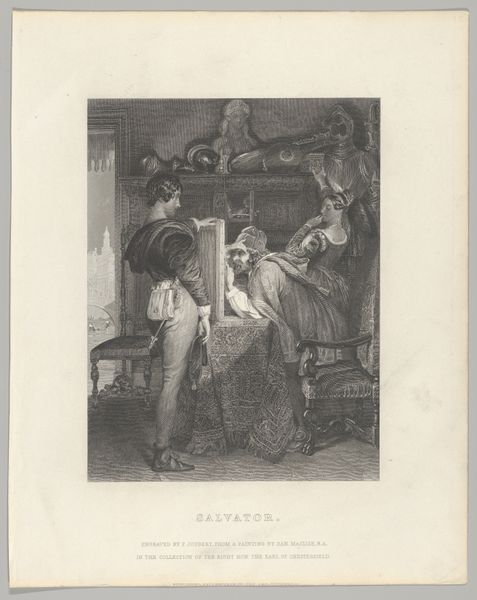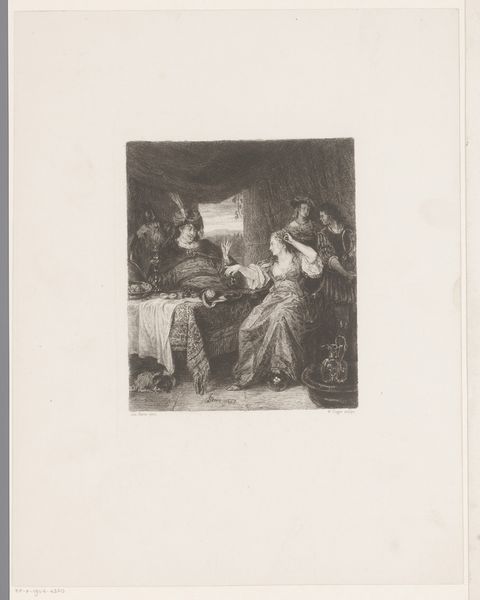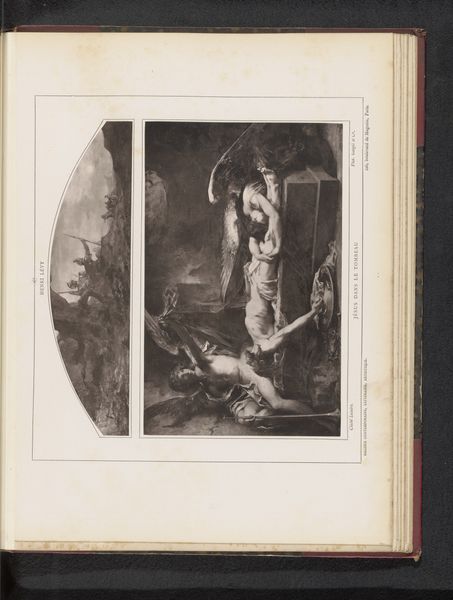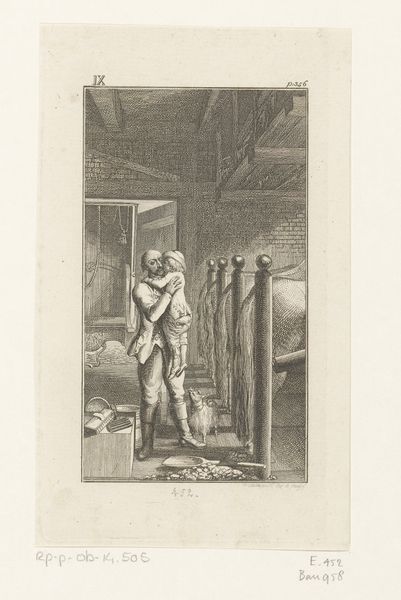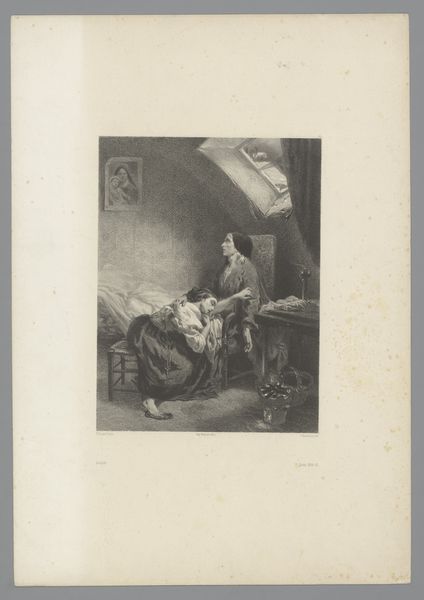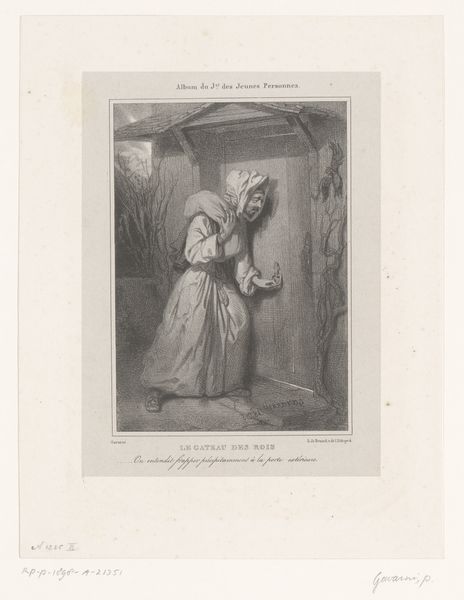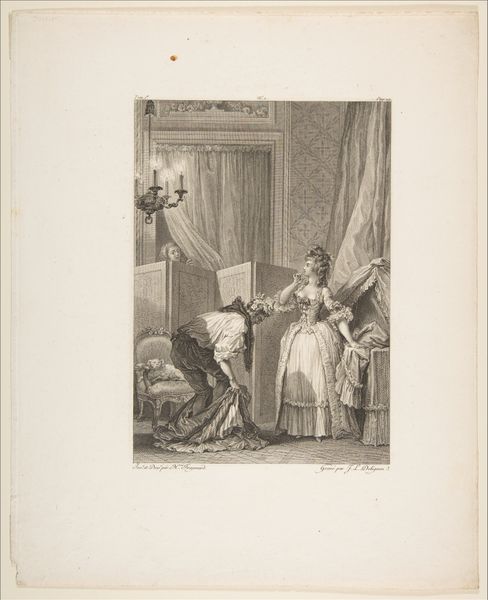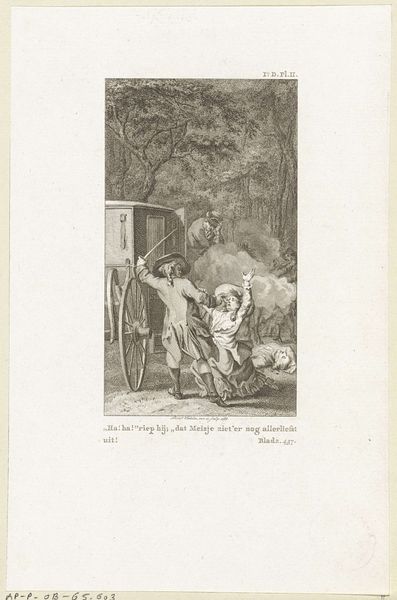
The Carbuncle, plate three from Zehn Blätter zu Hebels Alemannischen Gedichten 1820
0:00
0:00
drawing, print, etching, paper, ink
#
drawing
#
ink drawing
#
narrative-art
# print
#
etching
#
figuration
#
paper
#
ink
#
history-painting
Dimensions: 315 × 260 mm (plate); 462 × 379 mm (sheet)
Copyright: Public Domain
Editor: Here we have Sophie Reinhard’s etching "The Carbuncle," from 1820. It depicts a tense interior scene. A woman reclines, seemingly unwell, while a man bursts into the room. What story do you see unfolding when you consider the materials and process used to create this image? Curator: Look at the sharp lines, etched with acid into the metal plate. Each line represents a deliberate act of labor. The printmaking process inherently democratizes image production. It makes me think about who would have had access to such prints and what societal narratives Reinhard sought to circulate about health, domestic space, and the roles of men and women? Editor: That's a really interesting point about the distribution of knowledge and stories. The material itself facilitates the spread of information. What is it about the scene itself that captures your attention? Curator: I'm particularly drawn to the interplay of light and shadow created by the etching. The contrasting dark interior space versus the brightly lit outdoors begs questions about access to labor. Etching is itself labor intensive; How might social inequalities be revealed when understanding both those that produced art and how those works would portray society at large? How much control did the artist have? Editor: So the very *act* of creation using a specific method reflects a certain position, and a relationship to societal structure? Curator: Exactly. And that relationship also extends to the viewer and the intended audience. Think about the market for prints like these. Were they catering to the wealthy, offering a glimpse into the lives of others? Or were they aimed at a more modest audience, reflecting their own lived realities? How would production costs have affected their social impact? Editor: This has given me so much to consider about not only the final image, but its means of production. Thanks! Curator: Likewise! Thinking about the production of the artwork adds such a fascinating layer.
Comments
No comments
Be the first to comment and join the conversation on the ultimate creative platform.
